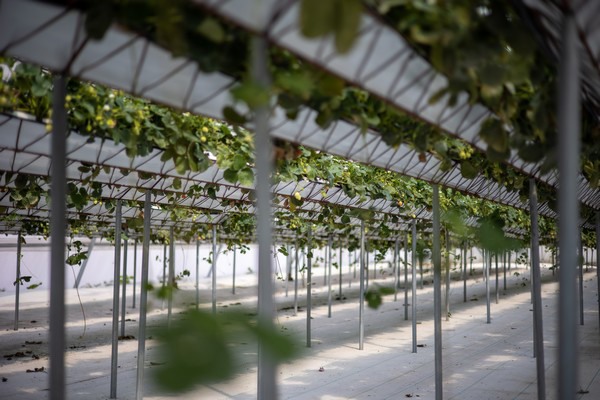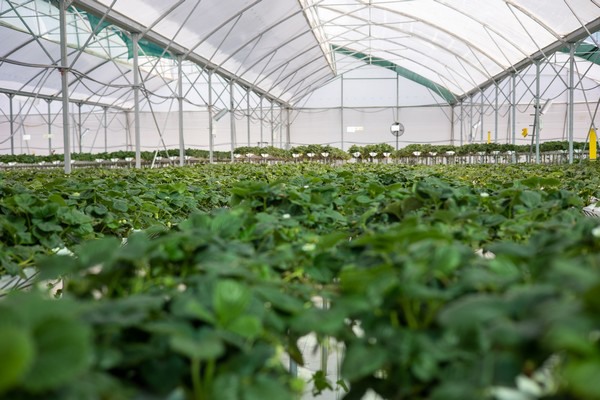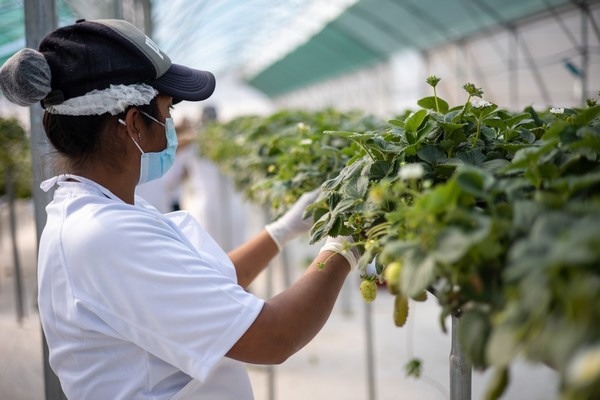Global challenges require a global approach, and this seems to be the route of GrowthX Farms, a holding company owning and operating commercial vertical and hydroponic farms as well as generally investing in the CEA space. “Currently, we own and operate the largest high-tech greenhouse cluster in Latin America, with our first 400,000 sq ft. facilities in the Republic of Panama,” says Pam Weiser, a Business Manager and Spokesperson at GrowthX Farms. “We plan to grow the business while expanding to regional locations with an abundance of sunlight, such as Mexico and the Caribbean, including the South-East US, as well as a potential expansion to the EMEA region (Europe, Middle East, and Africa). We also plan to partner with local and foreign governments to create net zero goals and guarantee food security for the larger population.”
The rationale for the expansion is based on the company’s understanding that thriving in the CEA space requires a global objective. “Our production system can be reproduced in any location where light is abundant. We selected these markets because they are close to the equator, where there is constant sunlight,” she adds.

Growing berries worldwide
Considering the global boom happening in the berry sector, it doesn’t come as a surprise that the team at GrowthX Farms is committed to serving this market segment. “Berries, specifically strawberries, are one of the fastest growing crops in terms of consumption and are considered the "holy grail" of Controlled Environment Agriculture, due to the difficulty in producing them at scale. Every single player in the space (which so far has been focused on leafy greens) is trying to learn how to get involved. We have 6 years of know-how and have already gone through the learning curve - which is providing us a significant advantage.” But of course, the global expansion won’t be focused on berries only, as they are also looking at other value-add crops, Pam remarks.

The company started in Panama, where they developed a low-energy consumption system, focusing on high-value berries. “Our system can accommodate the same density of plants as vertical farming facilities, while using natural sunlight, allowing us to produce at a cost which is comparable to traditional open field farming, and providing superior quality,” Pam says. “Our Panama-based cluster has fully automated fertilizer and water recirculation, and a probe system that allows tracking of crop groups and materials used, as well as monitoring and tracking software with in-house data analytics.”
Climate and labor
Being a new technology, Pam points out that it was challenging to find the right climate balance considering the highly hot and humid location. “Additional challenges have been the lack of existing knowledge and supplies in the traditional Agri-sector, along with the absence of skilled labor.”

Unlike traditional agriculture, CEA cultivation requires a certain degree of expertise in this particular field. This is why it may get quite difficult to find skilled labor, especially considering the recent labor shortages. “Despite the abundance of workers, most of the available labor in the Agri-sector are unskilled local indigenous women without any prior experience in AgriTech or Controlled Environment Agriculture. To solve this important challenge, we bring in experienced trainers to educate the workers and get them up to speed on the process,” says Pam.
Exporting know-how
Successfully managing berry cultivation in such a hostile environment will be absolutely beneficial for GrowthX Farms when exporting their farm cluster model to other countries. “We built our first AgriTech cluster in a hot and humid environment, which is very hostile for growing strawberries. Doing so in the past 6 years has allowed us to build know-how which we can transfer to different geographical locations.”

And Pam is convinced that this expertise will always keep them ahead of the competition. “At a global scale, our competitors are traditional open field farmers which make abundant use of pesticides and waste precious resources such as water and fertilizers. There is a new generation of companies that have been focusing on indoor farming, using artificial lighting and vertical systems to maximize plant density and product quality. However, despite their efforts, these systems have not proven to be very cost-effective. We have created a "secret sauce" in the Controlled Environment Agriculture (CEA) space, based on low-energy consumption, using natural light in greenhouses, high plant density, hydroponic recirculating systems, data analysis, and tight climate control. This system allows us to produce a higher quality product growing the same amount of plants as indoor vertical farmers, at a cost which is competitive with open field farming.”
GrowthX Farms is a fully owned subsidiary of Bacalia Group, the holding company of the Italian businessman Giuseppe Cicatelli, that has seeded and entirely funded the company’s Series A. “We are also evaluating the possibility of raising more capital through a Series B”, Pam added.
For more information:
GrowthX Farms
growthx.technology
